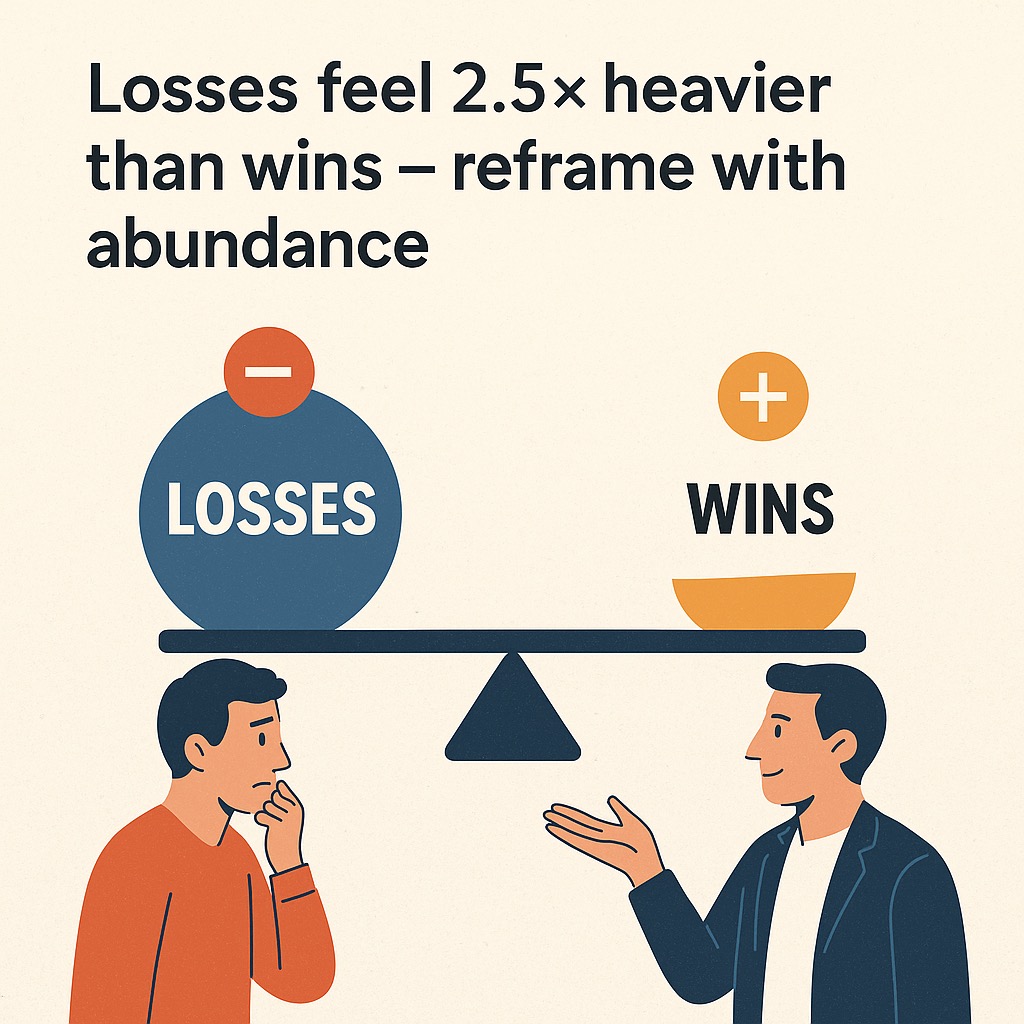Losses feel 2.5× heavier than wins — this isn't just psychological perception, it's measurable brain activity. Understanding this neurological reality is crucial for business leaders who want to make bold decisions and drive innovation in competitive markets.
The Science Behind Loss Aversion
The brain is wired for survival, not growth. Studies in behavioural economics show losses trigger about 2–2.5 times stronger reactions in the brain compared to equivalent gains. The amygdala lights up faster when we think of losing money, status, or opportunity, while the prefrontal cortex struggles to override that fear.
This Loss-Aversion Bias evolved to keep us alive when resources were scarce — but in modern leadership it often makes us too risk-averse. When our ancestors faced genuine threats to survival, being overly cautious was adaptive. In today's business environment, this same neural wiring can prevent leaders from taking calculated risks necessary for growth and innovation.
The Neurological Reality of Business Decisions
How Loss Aversion Manifests in Leadership
When leaders face potential setbacks, the amygdala's alarm system activates before rational analysis can occur. This creates several problematic patterns:
- Decision Paralysis: Over-analyzing opportunities until they disappear
- Incremental Thinking: Choosing "safe" options that offer minimal progress
- Innovation Avoidance: Rejecting breakthrough ideas due to perceived risk
- Opportunity Blindness: Missing growth possibilities while focusing on potential losses
The Competitive Disadvantage
Leaders who remain trapped in loss-aversion thinking consistently underperform compared to those who've learned to reframe setbacks as information and opportunities. This isn't about becoming reckless — it's about training your brain to process challenges through a growth-oriented lens rather than a scarcity-based fear response.
Practical Strategies for Retraining Your Brain
The Three Upsides Technique
If you want to innovate, you have to retrain this reflex. One simple hack is writing down three possible upsides every time you feel a setback. This technique works because it forces the prefrontal cortex to engage and override the amygdala's initial fear response.
Implementation Strategy
Say you lose a client — instead of spiralling, write:
1. Market Learning: "We now understand what retention challenges to address"
2. Resource Reallocation: "We have space to refine our service offering"
3. Targeting Opportunity: "We can now focus on our ideal client profile"
Building Neural Pathways for Growth
Over time, this habit strengthens neural pathways that bias your thinking toward abundance, not scarcity. Leaders who do this consistently make bolder moves and spot openings that risk-averse peers miss.
Weekly Practice: At the end of each week, review any setbacks and identify three learning opportunities or potential advantages that emerged from each situation.
The Leadership Advantage
Moving Beyond Survival Mode
Leaders who master loss-aversion reframing develop what neuroscientists call "cognitive flexibility" — the ability to adapt thinking patterns based on context rather than defaulting to fear-based responses.
This translates into:
- Strategic Risk-Taking: Making calculated decisions based on upside potential
- Innovation Leadership: Pursuing breakthrough opportunities others avoid
- Team Confidence: Modeling resilient thinking that spreads throughout the organization
- Market Advantage: Spotting and acting on opportunities while competitors hesitate
Implementation Guide
- Daily Practice: Start each morning by identifying one area where loss-aversion might be limiting your thinking, then consciously reframe it using the three upsides technique.
- Meeting Applications: When teams present challenges, immediately ask: "What are three ways this situation could actually benefit us?" This trains both you and your team to think beyond immediate setbacks.
- Strategic Planning: Build loss-aversion awareness into strategic planning by explicitly identifying where fear-based thinking might be constraining growth opportunities.
Additional Resources:
Neuroscience for Business Online Short Course - MIT Sloan's comprehensive program for a deeper dive into neuroscience applications in business, an excellent resource for leaders looking to apply brain science to strategic decision-making.
Connect with Us
See this post on our LinkedIn - Check out our latest insights on applying neuroscience principles to overcome loss aversion and drive business innovation.
Follow us for more insights on neuroscience for business, leadership optimization, and AI-driven productivity strategies!
